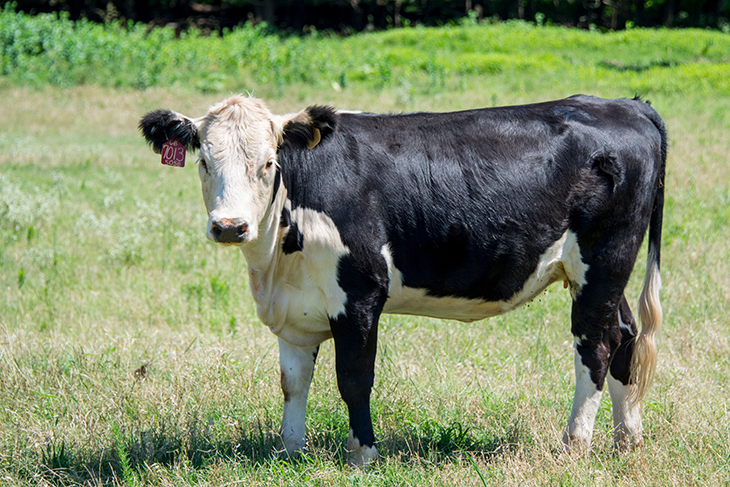
Go gold with mid-to-late summer supplementation for fall-born replacement heifers
Friday, June 29, 2018
Cattle breeders in Oklahoma should be looking at using the gold standard in their feeding programs for replacement heifers, as in the Oklahoma Gold and Oklahoma Super Gold programs.
“Weaning time is finishing up for fall-born replacement heifers, putting them in a very critical growing period when they need to put on about 1.5 pounds per day from weaning to the start of the breeding season,” said Glenn Selk, Oklahoma State University Cooperative Extension emeritus animal scientist and managing editor of the popular OSU Cow-Calf Corner newsletter.
Currently summer pastures are green, growing and adequate in protein content. However, warm season pastures such as native grass or bermudagrass can be expected to be declining in forage quality during the hot and probably drier days of July, August and September.
“These grasses also will be reaching plant maturity during this time, which accelerates the decline in protein content,” Selk said.
To expect a high percentage of replacement heifers to be cycling at the start of the fall breeding season – the recommended target is greater than 90 percent – the animals need to be at least 60 percent of their mature weight.
“This means the young heifers must receive supplemental protein to continue to grow at the necessary pace of 1.5 pounds per head per day going into their first breeding season,” Selk said. “An economical solution would be to give these heifers 1.5 to 2 pounds per head per day of the protein supplement called Oklahoma Gold.”
Developed by OSU’s Division of Agricultural Sciences and Natural Resources, Oklahoma Gold is a protein supplement program consisting of a high protein 38 percent to 45 percent pellet that contains the label-recommended dosage of an ionophore. Ionophores are feed additives – monensin or lasalocid – that improve feed utilization, inhibit the parasitic disease of the intestinal tract coccidiosis and enhance the onset of puberty in growing heifers.
“Research from Texas A&M University in the 1970s indicated heifers receiving an ionophore reached puberty about 2 weeks earlier than counterparts that did not receive an ionophore,” Selk said. “Inclusion of the ionophore in a growing program should cause a few more heifers to be cycling early in the breeding season.”
The protein supplement will allow microbial digestion of the average-quality, late-summer forage, which in turn provides the energy required to support the desired amount of weight gain in a heifer.
“It’s important to remember that if forage quantity is very limited, the protein supplement alone will not produce adequate gains,” Selk said. “In this scenario, a rancher first needs to decide if keeping more replacement heifers is really in his or her best interest.”
Lightweight or young, weaned heifers that need an added boost while still on late summer pasture may benefit more from the Oklahoma Super Gold supplementation program. Also developed by DASNR animal scientists, this program consists of feeding 3 pounds per head per day of a 25 percent crude protein pellet. As with the Oklahoma Gold program, an ionophore is included at the proper dosage.
“Bottom line: Plan ahead now for late summer supplementation of fall-born replacement heifers,” Selk said. “It’s an investment in a rancher’s time that really pays off.”
Oklahoma is the nation’s fifth-leading producer of cattle and calves, according to USDA National Agricultural Statistics Service data. Cash receipts for Oklahoma cattle exceed $3.7 billion annually.
The Oklahoma Cooperative Extension Service is one of two state agencies administered by DASNR, and is a key part of the university’s state and federally mandated teaching, research and Extension land-grant mission.
